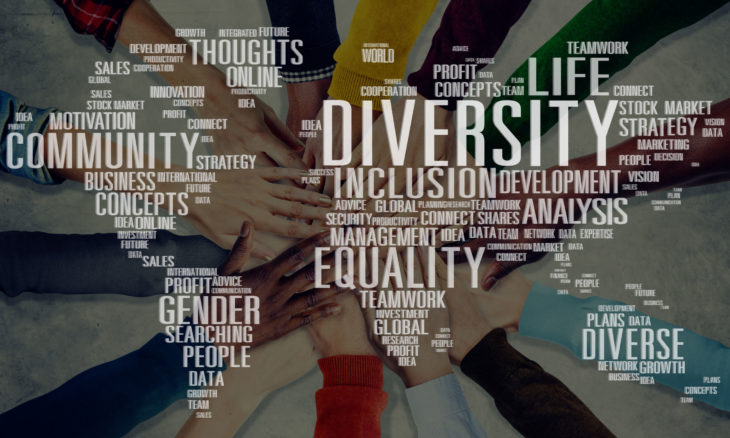This article was originally published on May 29th, 2019.
In today’s Wednesday Wisdom feature, Consultants Collective member consultant, John Clemons discusses diversity and inclusion with fellow Consultants Collective member consultant Rich Goldberg and Ben Hasan, SVP and chief culture, diversity and inclusion officer at Walmart.
Part I
Diversity and inclusion (D&I) appears to be front and center again. With a renewed national focus on immigration and the emergence of the #metoo and Black Lives Matter movements, the call for action is steadily increasing.
We spoke to two leading diversity and inclusion leaders, Ben Hasan, senior vice president and chief culture, diversity and inclusion officer at Walmart, and Consultants Collective member Rich Goldberg, president of Rich Goldberg Consulting LLC and a consultant in diversity and inclusion. Together, they present a compelling case on how diversity and inclusion can benefit and enrich businesses and organizations – but there is no clear path on making it fully operational and an integral part of American business.
“On one hand,” Hasan states, “thanks in large part to a wave of empirical and heuristic research on the business case of D&I, corporate America has come to realize that diversity, equity and inclusion are not just buzz words; they are a strategic and business imperative. It’s beyond compliance-based regulation or good faith efforts… D&I is a significant driver to survive and thrive in a competitive and innovative business climate. On the other hand, we are collectively struggling with the how.”
Goldberg said he views the current state of D&I with “cautious optimism. Progress continues to be slow, and there continues to be cultural resistance which impedes progress. We must persist and insist on tangible commitment. People are more aware of D&I and companies are making the verbal commitments but in hiring and more significant moves, not so much.”
According to “Hiring Discrimination Against Black Americans Hasn’t Declined in 25 Years,” published by the Harvard Business Review (October 2017), the level of discrimination encountered by black Americans during the hiring process has remained unchanged over the past quarter century.
Recent research, conducted by economists from the University of Chicago and Stanford University, indicates that less than one fifth of C-suite executives at large publicly traded U.S. companies are women, only 24 of the CEOs at Fortune 500 companies are women, and only three are black.
“Diversity and inclusion is one of the biggest challenges corporate America has encountered – yesterday, today and tomorrow, because there is no single right answer, no one recipe for action, and no end game in sight,” Hasan said. “I do believe that the companies who figure it out first will be the winners for talent in this ever-changing world we live and do business in.”
Part II: How recent activist movements have influenced diversity and inclusion and guidance on implementing and managing a diversity and inclusion strategy
The Diversity and Inclusion Conundrum: An endless journey?
Part II
At Walmart, associate (employee) resource groups offer a safe space to share and exchange personal experiences, observations and ideas among associates with similar backgrounds; CEO Doug McMillon recently hosted a two-day immersive tour at civil rights sites in Montgomery, AL, with his direct reports; and an inclusive education curriculum is being developed for leaders which includes unconscious bias education and historical education sessions with the Racial Equity Institute in Greensboro, NC (https://www.racialequityinstitute.com/).
Ben Hasan, senior vice president and chief culture, diversity and inclusion officer at Walmart, notes that the world’s largest retailer has been on the diversity and inclusion (D&I) journey for the past 15 years. The actions above, he adds, are just a few of many the company has underway.
“Diversity and inclusion shouldn’t be perceived as an add-on an afterthought,” he said. “It should be an organic component of our day-to-day work and processes. Through purpose-driven and dedicated efforts, I’m glad to see we’ve paved the way for a step change with a stronger leadership commitment, broader business ownership, and associate engagement. We’re on the right path toward our vision of including everyone. Nothing is more satisfying than that.”
External influences, such as the #metoo and Black Lives Matter movements, have also heightened the visibility of D&I. Rich Goldberg, president of Rich Goldberg Consulting LLC and a consultant on D&I, says corporations can take the lead in condemning negative behaviors that impact all diverse groups. “They can take a positive position of zero tolerance for this kind of behavior. Having real, honest discussions can also be transformative.”
Looking ahead, both agree that diversity and inclusion must be an integral part of an organization’s DNA. Goldberg advises, “Look at the big picture, but then decide on a few things to do and do well. Work the Five Dysfunctions Pyramid from the bottom: Develop trust, listen for conflict, obtain commitment, assign accountability, and don’t rush results.” (https://www.tablegroup.com/books/dysfunctions)
Among Hasan’s recommendations and thoughts for starting or strengthening an organization’s diversity, equity and inclusion (DEI) program:
- Start at the top of the organization. Your leadership must talk about diversity, equity and inclusion as one of the organization’s strategic initiatives.
- You can’t solve what you don’t discuss. Create “safe spaces” to have real dialog about diversity, equity and inclusion.
- Imbed your DEI program in your talent acquisition and talent development strategies. Create a diversity, equity and inclusion scorecard with well-selected metrics to consistently measure and track progress.
- Your scorecard is the output of your DEI strategy, so you must change the inputs (acquisition, development, retention) to get the best results.








